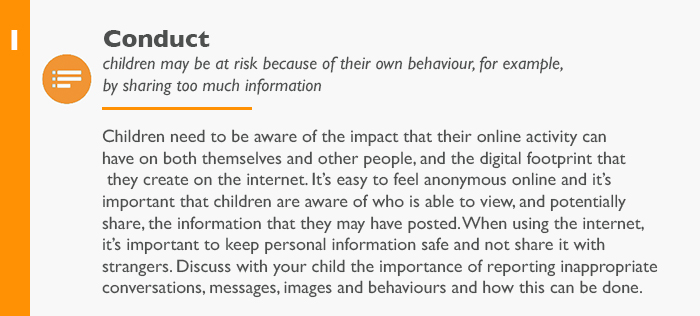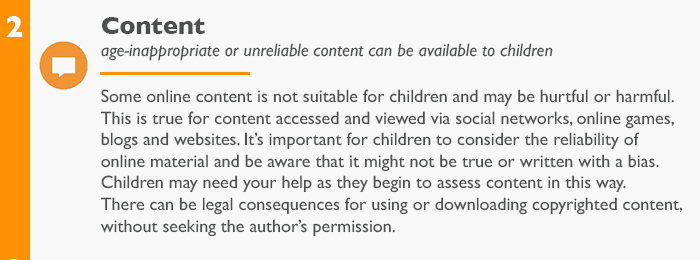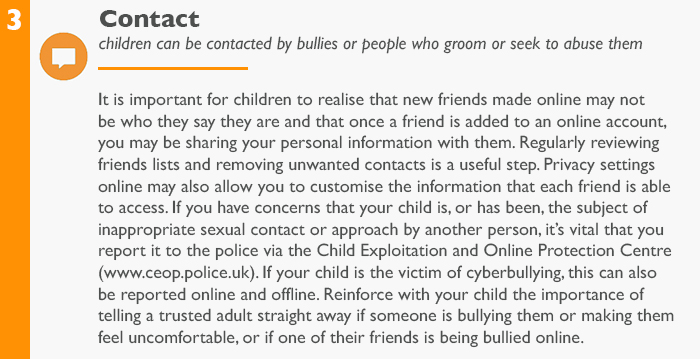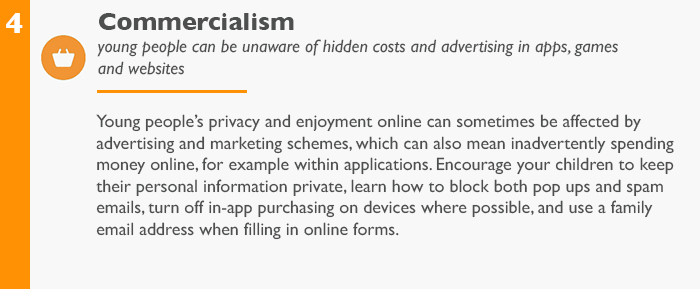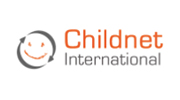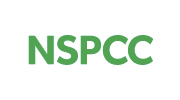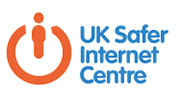We use cookies on our website and you can manage these via your browser setting at any time. See our Cookie Policy to learn more.
To review our Privacy Policy, including our obligations under the General Data Protection Regulation, please see our Privacy Policy
PARENTS: Please note that you should allow cookies in order to log into the Parent Area. Further information
The topic of E-safety is an increasing and evolving area for parents and schools to consider. As more time is spent at home as a result of lockdown and a greater emphasis placed on computerised and technology enabled learning, the time children spend on technology inevitably increases. A major concern will be both how long our children are spending with technology but also what they are doing.
E-safety can be simply summarised as the ‘safe and responsible use of technology’ though, in practice, it is both broad ranging and dynamic concept. There are four key areas that parents should monitor, and these are commonly called the 4 Cs (conduct, content, contact and commercialism).
The UK Safer Internet Centre summarises these as follows
At schools there are firewalls, monitoring of pupil searches, education on the safe use of technology and how to report abuses but even these measures are not failsafe. Further, the intensity of the working day and working week means that time on technology is limited. Currently, at home, children will have to spend more time on computers/tablets etc. and so parents need to be more vigilant and there is no shortcut for parents. We have to ensure that we have a good working knowledge of the 4 ‘Cs’ and how our children are engaging with the online world so the links below have been selected to offer parents the essential reads.
In short, parents should have child appropriate restrictions on the internet access. They should encourage their children to share and explain how they are using technology (and many children are very good teachers). Finally, parents should be willing to discuss online behaviours without being judgemental. The key to E-safety education is to be able to keep open lines of communication with your child. Useful conversation openers might be to ask your child to show you how the apps they like work - TikTok, Snapchat, Instagram for example. However, you could also ask them if they would like to see some of the apps that you use, especially ones that are used for working, organisation and planning.
If you have any concerns regarding your child’s use of technology then please do email me on psb@bryanston.co.uk and I will endeavour to either provide you with advice or to identify someone who can answer specific questions.
Suggested Links, Reading and Websites
| Childnet - learn more Set up in 1995 in response to the rapid growth of the internet. They provide resources for young people, teachers and parents. Click here to visit the parents' section which offers advice on having a conversation with children as well as a parents' toolkit. However, if you click on the logo, it will take you to an excellent section of the parents called ‘hot topics’ and it provides very accessible and sensible advice on topics ranging from digital well-being to sexting to livestreaming. |
|
| CEOP ‘ThinkUKnow’ - learn more An education programme from the National Crime Agency’s CEOP Command. It was established in 2006 and provides education about sexual abuse and sexual exploitation. Some of their videos are hard hitting but impactful on pupils. The link to the left takes you to their parents' advice page but there are sections on that page that you can direct children to as well. |
|
| NSPCC - learn more Has been a leading advocate for children’s rights and protection for many years but in 2018 they set a new standard by publishing a 5 year research investigation in to children’s behaviour online entitled “How safe are our children online.” It was a broad ranging report, though a subsequent report was published in 2019. The parents' section of the NSPCC website is easy to navigate and contains both advice and latest topics. |
|
| Education for a Connected World - learn more The framework is produced by the UK Government and describes the digital knowledge and skills that children and young people should have the opportunity to develop at different ages and stages of their lives. It highlights what a child should know in terms of current online technology, its influence on behaviour and development, and what skills they need to be able to navigate it. We use it at Bryanston to consider what we deliver. The knowledge that children are expected to have/be taught before the age of 12 is illuminating. |
|
| The UK Safer Internet Centre - learn more Although Childnet is mentioned earlier, it is also a contributor to the UK Safer Internet Centre which is a partnership of three leading organisations: Childnet International, Internet Watch Foundation and SWGfL, They state their mission is, “to promote the safe and responsible use of technology for young people.” Their parents' section is also excellent and can be accessed by clicking on the logo to the left. |

